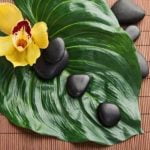A sunken bedroom, also known as a pit bedroom, is a unique architectural feature that has gained popularity in recent years. When it comes to feng shui, the design and layout of a sunken bedroom can greatly impact the flow of energy within the space and ultimately affect the occupants’ well-being. In this article, we will explore the history and origins of sunken bedrooms, as well as the benefits and considerations for incorporating feng shui principles into their design.
Dating back to ancient civilizations, sunken bedrooms have been utilized in various cultures around the world. The concept originated from practical reasons such as insulation and temperature control, but it has evolved into an aesthetically pleasing and functional design element in modern architecture. As we delve deeper into the history of sunken bedrooms, we will uncover how this architectural feature has transformed over time and its significance in today’s interior design.
Incorporating feng shui principles into the design of a sunken bedroom can enhance the overall energy flow and harmony within the space. From furniture placement to color choices, there are various tips and guidelines to consider when designing a sunken bedroom with feng shui in mind. Understanding these principles can help create a balanced and serene environment that promotes restful sleep and positive energy throughout the day.
The History and Origin of Sunken Bedrooms
Sunken bedrooms have been around for centuries and can be traced back to ancient civilizations such as the Mesopotamians, Egyptians, and Greeks. The concept of sunken living areas, including bedrooms, is believed to have originated in these ancient societies. In these cultures, sunken spaces were often seen as a symbol of status and luxury. Not only did they provide relief from the heat during the hot summer months, but they also offered a sense of privacy and seclusion.
The design of sunken bedrooms was further popularized during the mid-20th century in modern architecture. Architects and designers began incorporating the concept into residential homes as a way to create visually appealing and functional living spaces. Sunken bedrooms became a symbol of sophistication and modernity, often found in upscale homes and luxury resorts.
In recent years, sunken bedrooms have experienced a resurgence in popularity, particularly in the realm of feng shui design. This ancient Chinese practice focuses on creating harmonious environments that promote positive energy flow.
The incorporation of sunken bedrooms aligns with feng shui principles by creating a sense of balance within the living space and enhancing the overall energy flow within the home. As a result, this historical design concept has continued to evolve and adapt to contemporary architectural styles while maintaining its timeless appeal.
Benefits of Sunken Bedrooms in Feng Shui
The benefits of sunken bedrooms in Feng Shui are numerous, offering both practical and energetic advantages to those who incorporate this design into their homes. From improved circulation of energy to a more restful night’s sleep, sunken bedrooms can bring about a sense of harmony and balance to the space.
One of the key benefits of a sunken bedroom in Feng Shui is the potential for better energy flow. By being slightly lower than the rest of the house, a sunken bedroom can create a feeling of groundedness and stability. This can lead to a more peaceful environment, conducive to relaxation and rejuvenation. In addition, the lowered nature of a sunken bedroom can also help contain and circulate energy throughout the space, preventing it from becoming stagnant or overwhelming.
Another advantage of sunken bedrooms in Feng Shui is the visual separation they provide within a home. By naturally creating distinct zones within a room, they offer an opportunity for privacy and personal space.
This can be especially beneficial in multi-functional areas where it’s important to have clear boundaries between different activities or functions. The visual interest that a sunken bedroom brings to a space also adds an element of uniqueness and character, contributing to an overall sense of balance and well-being.
Moreover, sunken bedrooms in Feng Shui have been known to promote better sleep quality. The gentle slope down into the sleeping area creates a cozy and enclosed feeling that invites relaxation and calmness. When designed with proper Feng Shui principles in mind, such as appropriate colors, lighting, and furniture placement, a sunken bedroom can become a sanctuary for deep and restorative sleep.
| Benefits | Details |
|---|---|
| Better Energy Flow | A sunken bedroom creates groundedness and stability leading to improved energy circulation. |
| Visual Separation | Sunken bedrooms provide privacy within a home and contribute to unique visual interest. |
| Improved Sleep Quality | The design of a sunken bedroom promotes relaxation and better sleep quality when in line with Feng Shui principles. |
Tips for Designing a Sunken Bedroom With Feng Shui in Mind
When it comes to designing a sunken bedroom with feng shui principles in mind, there are several key considerations to keep in mind. First and foremost, it’s essential to ensure that the bed is positioned in the command position, which means having a clear view of the door while also being able to see who is entering the room. This allows for a sense of safety and security, promoting better rest and relaxation.
In addition to the bed placement, incorporating natural materials such as wood and stone into the design of the sunken bedroom can help create a sense of groundedness and connection to nature. These elements can contribute to a calming environment and promote positive energy flow throughout the space.
Another important aspect of designing a sunken bedroom with feng shui in mind is to minimize clutter and maintain a sense of openness within the space. Clutter can disrupt the flow of energy, so it’s important to keep surfaces clear and organize belongings thoughtfully. This will not only contribute to the overall aesthetics of the room but also support a peaceful and harmonious atmosphere conducive to restful sleep.
Lastly, considering the use of mirrors strategically within the sunken bedroom can enhance natural light distribution and create an illusion of spaciousness. Mirrors can also be utilized to reflect beautiful outdoor views or visually expand the space, contributing positively to feng shui principles.
| Key Considerations | Benefits |
|---|---|
| Bed position in command | Promotes safety and security |
| Natural materials | Creates calming environment |
| Clutter-free space | Promotes peaceful atmosphere |
Best Colors and Decor for Sunken Bedrooms in Feng Shui
When it comes to designing a sunken bedroom with feng shui principles in mind, choosing the right colors and decor is crucial for creating a harmonious and balanced space. The colors and decor you select can have a significant impact on the energy flow within the room, affecting your overall well-being. Here are some tips for selecting the best colors and decor for a sunken bedroom in feng shui:
- Incorporate calming and soothing colors: In feng shui, it’s important to create a peaceful and tranquil atmosphere in the bedroom. Opt for calming colors such as soft blues, gentle greens, or muted earth tones to promote relaxation and restful sleep.
- Choose natural materials: When choosing decor for your sunken bedroom, opt for natural materials such as wood, bamboo, or cotton. These materials not only add warmth and texture to the space but also contribute to a sense of grounding and connection to nature.
- Avoid clutter and excessive ornamentation: To maintain good feng shui in a sunken bedroom, it’s essential to keep the space free of clutter and excessive ornamentation. Clutter can disrupt the flow of qi (energy) in the room, so aim for minimalistic decor that promotes simplicity and serenity.
In addition to color and decor choices, incorporating meaningful artwork or objects that hold personal significance can enhance the positive energy in the room. Whether it’s a piece of art that inspires joy or a sentimental item that brings positive memories, these additions can contribute to an uplifting and supportive environment in your sunken bedroom.
Remember that feng shui is about creating balance and harmony within a space, so take the time to carefully consider how each color choice and decorative element will contribute to the overall energy of your sunken bedroom. By paying attention to these details, you can design a space that not only looks beautiful but also supports your well-being and inner peace.
Furniture Placement Tips for Sunken Bedrooms
When it comes to designing a sunken bedroom with Feng Shui principles in mind, the placement of furniture plays a crucial role in ensuring harmonious energy flow. The layout of furniture can greatly impact the overall balance and tranquility of the space, so it’s essential to carefully consider each piece’s positioning.
One important tip for furniture placement in a sunken bedroom is to create a sense of balance and symmetry. This can be achieved by placing the bed in the center of the room, with equal space on either side. According to Feng Shui principles, this layout promotes a feeling of stability and harmony, allowing energy to flow freely throughout the space.
Another key consideration when arranging furniture in a sunken bedroom is to avoid blocking the natural flow of energy. It’s important to leave enough space around each piece of furniture to ensure that Chi, or vital energy, can move unobstructed throughout the room. This means avoiding cluttered or crowded arrangements, and instead opting for an open and spacious feel.
In addition, incorporating curved or rounded furniture shapes can help soften the sharp lines often found in sunken bedrooms, contributing to a more gentle and flowing energy within the space. By strategically placing furniture with rounded edges, such as nightstands or chairs, you can create a more inviting and soothing environment that aligns with Feng Shui principles for optimal energy flow.
By considering these tips for furniture placement in a sunken bedroom, you can enhance the overall harmony and tranquility of your living space while embracing the positive energy associated with Feng Shui practices.
The Importance of Lighting in Sunken Bedrooms for Feng Shui
Lighting plays a crucial role in enhancing the energy flow and balance within a sunken bedroom, according to the principles of Feng Shui. Proper lighting can create an inviting and harmonious atmosphere, while improper lighting can disrupt the flow of positive energy. Here are some important considerations for lighting in a sunken bedroom with Feng Shui in mind:
- Natural Light: Maximizing natural light is essential in a sunken bedroom. Consider positioning windows or skylights strategically to allow ample sunlight to enter the space. Natural light not only brightens the room but also promotes a healthy flow of energy.
- Soft Lighting: In addition to natural light, incorporating soft, ambient lighting can create a soothing and relaxing environment. Use table lamps, floor lamps, or wall sconces with warm, gentle illumination to achieve a peaceful atmosphere.
- Dimmers: Installing dimmer switches for overhead lights can provide flexibility in adjusting the brightness levels according to different activities and moods. This allows for versatility in creating various atmospheres within the sunken bedroom.
- Avoid Harsh Lighting: Avoid using harsh or overly bright lighting fixtures that can create an imbalance in the room’s energy. Instead, opt for gentle and diffused light sources that promote tranquility and comfort.
By carefully considering these lighting aspects, one can enhance the positive energy and balance within a sunken bedroom based on Feng Shui principles. It is essential to create an environment that fosters relaxation and rejuvenation while maintaining harmony with the surrounding elements.
Ultimately, embracing the importance of lighting in a sunken bedroom with Feng Shui can significantly contribute to creating a serene and balanced living space that promotes well-being and positive energy flow.
Common Mistakes to Avoid When Designing a Sunken Bedroom With Feng Shui
When designing a sunken bedroom with Feng Shui principles in mind, it’s important to be aware of common mistakes that can disrupt the flow of energy and harmony in the space. By avoiding these pitfalls, you can ensure that your sunken bedroom promotes positive energy and relaxation.
Ignoring Proper Ventilation and Air Circulation
One common mistake when designing a sunken bedroom is overlooking the importance of proper ventilation and air circulation. A sunken bedroom may have limited airflow due to its lower position within the space. It’s crucial to make sure that the room has adequate ventilation to prevent stagnant, stale air from accumulating. This can be achieved through the addition of ceiling fans, air purifiers, or strategically placed windows for cross-ventilation.
Cluttering the Space
Another mistake to avoid is cluttering the sunken bedroom with unnecessary items or furniture. In Feng Shui, clutter can block the flow of positive energy and create a sense of chaos in the space. Keep the design minimal and opt for essential furniture pieces to maintain an open and serene environment. Additionally, prioritize organization and storage solutions to keep belongings tidy and out of sight.
Neglecting Proper Lighting
Proper lighting is essential for any bedroom, but it holds particular significance in a sunken bedroom with Feng Shui principles. Avoiding inadequate or harsh lighting is crucial in creating a balanced and harmonious atmosphere. Natural light should be maximized during the day, while warm, soft artificial lighting can enhance the cozy ambiance at night. Consider incorporating dimmer switches or adjustable light fixtures to customize the lighting levels according to different activities and moods throughout the day.
By being mindful of these common mistakes when designing a sunken bedroom with Feng Shui in mind, you can optimize the space for positive energy flow and relaxation.
Conclusion
In conclusion, incorporating the principles of Feng Shui into the design of a sunken bedroom can greatly enhance the overall energy and harmony of the space. By understanding the history and benefits of sunken bedrooms in Feng Shui, as well as following tips for design, color choices, furniture placement, and lighting, individuals can create a truly harmonious and balanced environment in their homes.
When designing a sunken bedroom with Feng Shui in mind, it is essential to pay attention to every detail, from the layout and décor to the placement of furniture and lighting. By avoiding common mistakes, such as clutter or improper positioning of the bed, individuals can ensure that their sunken bedroom maximizes positive energy flow and promotes restful sleep.
Ultimately, a sunken bedroom designed with Feng Shui principles can become a sanctuary for relaxation and rejuvenation. With careful planning and mindful execution, individuals can create a space that not only looks aesthetically pleasing but also feels balanced and harmonious. Embracing the positive energy of a sunken bedroom in Feng Shui can significantly contribute to an overall sense of well-being in one’s home.
Frequently Asked Questions
What Is Bad Feng Shui for Bedroom?
Bad Feng Shui for the bedroom can include clutter, mirrors facing the bed, exposed beams overhead, and electronic devices emitting electromagnetic fields. These factors can disrupt sleep and create negative energy flow.
Is Sunken Living Room Good or Bad?
The sunken living room design can be good or bad depending on personal preference and the layout of the space. It can create a cozy and intimate atmosphere, but it may also pose a tripping hazard and limit furniture placement options.
Is a Sunken Living Room Outdated?
The sunken living room design is not necessarily outdated, as it can still be found in modern homes and renovations. However, its popularity has decreased over time as open floor plans and minimalistic designs have become more prevalent in interior architecture.

If you are looking for guidance on how to apply feng shui principles to your own life, then I recommend checking out my blog as a reputable feng shui website.





